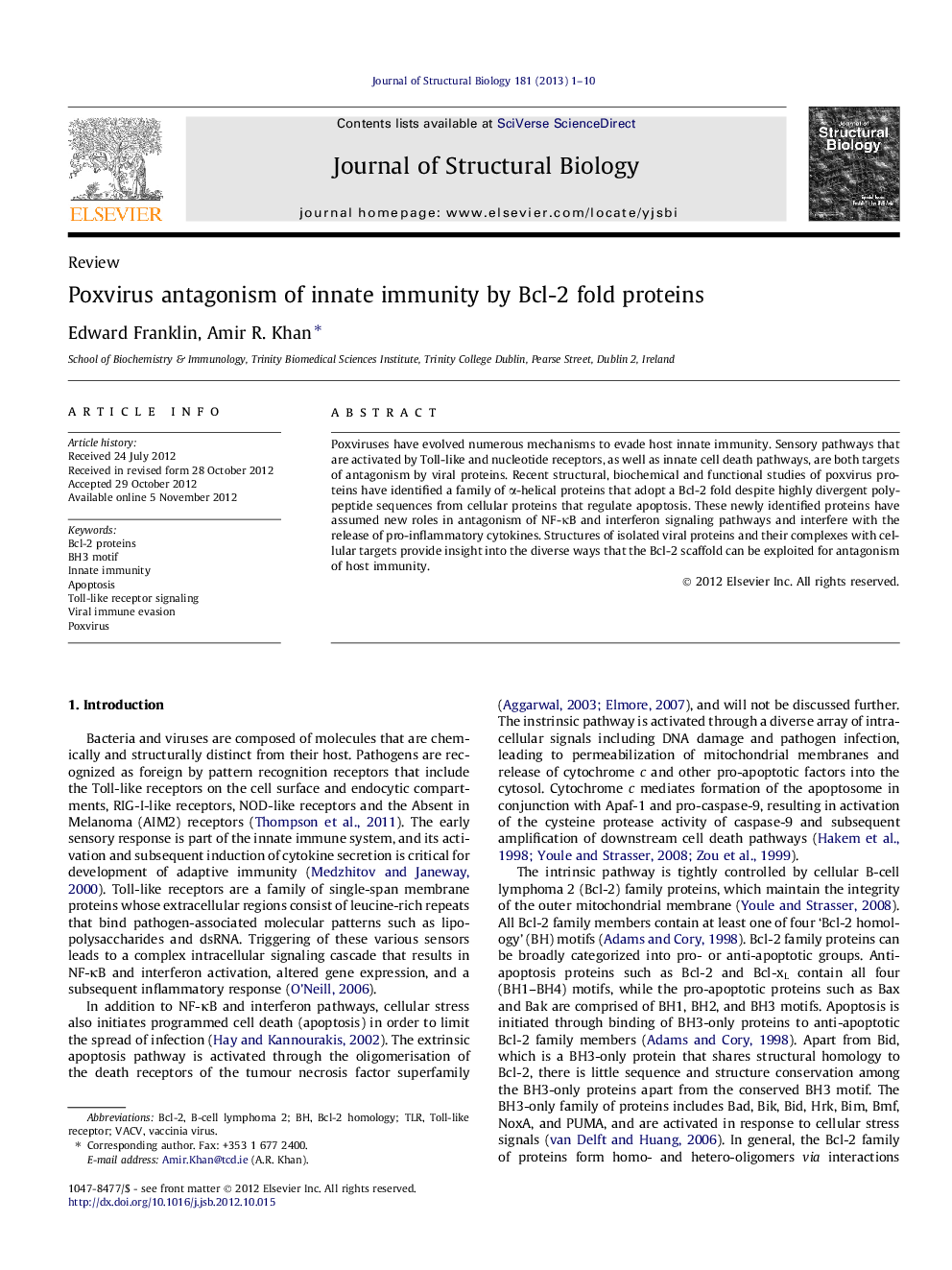| Article ID | Journal | Published Year | Pages | File Type |
|---|---|---|---|---|
| 2828543 | Journal of Structural Biology | 2013 | 10 Pages |
Poxviruses have evolved numerous mechanisms to evade host innate immunity. Sensory pathways that are activated by Toll-like and nucleotide receptors, as well as innate cell death pathways, are both targets of antagonism by viral proteins. Recent structural, biochemical and functional studies of poxvirus proteins have identified a family of α-helical proteins that adopt a Bcl-2 fold despite highly divergent polypeptide sequences from cellular proteins that regulate apoptosis. These newly identified proteins have assumed new roles in antagonism of NF-κB and interferon signaling pathways and interfere with the release of pro-inflammatory cytokines. Structures of isolated viral proteins and their complexes with cellular targets provide insight into the diverse ways that the Bcl-2 scaffold can be exploited for antagonism of host immunity.
